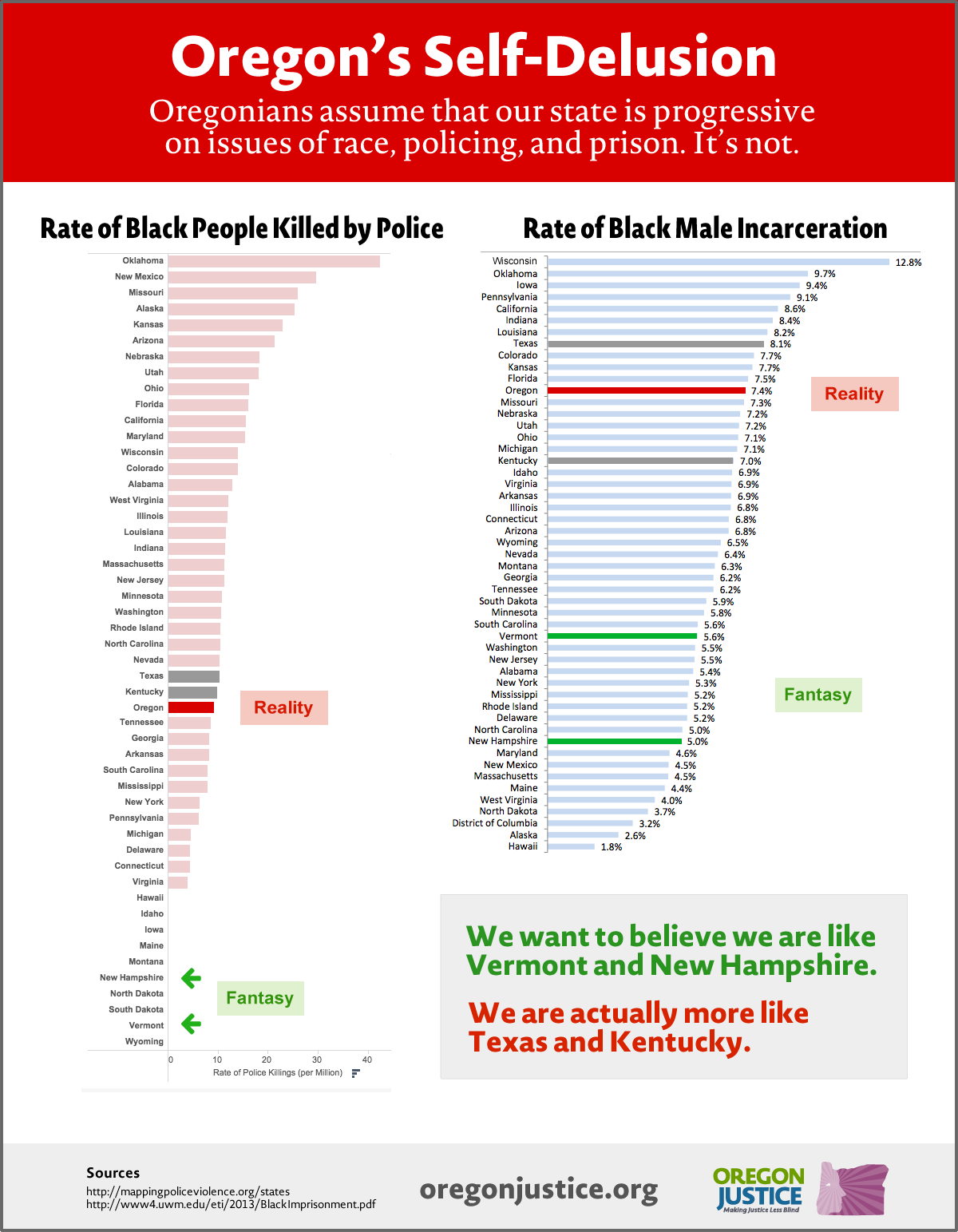The 2013 Justice Reinvestment Act was aimed to flatline prison growth in Oregon.
However, in order for it to pass, all changes to Measure 11 and Measure 57’s mandatory minimums were removed. The result is that our prison population isn’t actually declining, and we may have to build a new prison after all.
To invest in community programs without reducing our draconian sentencing scheme is like trying to run a race on one leg. It won’t get us there. You cannot fix mass incarceration without decarceration.
Will Kate Brown support real prison reform?
Read the story and sign the petition.
Let’s talk about decarceration.
When you talk about letting people out of prison early, people freak out.
But let’s face it, sticking to the the arbitrary date on which people are “supposed” to be released doesn’t actually make you any safer. Being in prison for 10 years doesn’t magically make someone a better person than being in prison for 9 years. If someone is due to be released on April 20th, they aren’t a “dangerous criminal” on April 19th and then magically a “safe citizen” on April 21st. These dates are meaningless when it comes to public safety.
There is some strange comfort people feel in enforcing numbers that have been previously decided on, but the reality is that safety doesn’t come from prison terms. So where does it come from? How could we reduce our reliance on prison for a (false) sense of safety, and create real safety instead?
Here is an excerpt from a paper on “Smart Decarceration” by the Center for Social Development.
What Steps Are Needed to Move from Mass Incarceration to Smart Decarceration?
Smart decarceration requires recognizing that altering the overreliance on incarceration is a multifaceted endeavor. Smart decarceration will be a comprehensive approach that requires a combination of the following steps:
(1) Reconsidering the utility and function of incarceration. In the United States’ current system, incarceration is typically the default response to crime. What would the use of incarceration look like if it were used to incapacitate only the most dangerous? What if incarceration were not an option for certain types of offenses?
(2) Supporting innovations across all sectors of the criminal justice system. Each sector of the criminal justice system (e.g., law enforcement, courts, jails, prisons, community supervision) has contributed to the phenomenon of mass incarceration and must be engaged to achieve smart decarceration. A critical first step will be to determine the parts of the criminal justice system that could benefit from less baton passing and more integration.
(3) Multidisciplinary approaches to policy and practice interventions. During the era of mass incarceration, few coherent and effective policy or practice interventions have been developed to address the needs of the expanding incarcerated population or to prevent incarceration. Because smart decarceration involves more than simply reducing the prison population, a multidisciplinary person-in-environment perspective is necessary.
(4) Rigorously evaluating and applying emerging evidence. Significant work is needed to uncover key mechanisms of change in behavioral intervention approaches. Modern intervention approaches often have small effect sizes because of current gaps in knowledge about key mechanisms. Moreover, empirically supported behavioral interventions to reduce recidivism have not been widely disseminated and adopted, which is a typical research-to-practice translational problem seen in many other contexts. Thus, application of new knowledge will have to be purposefully addressed.
So basically, we need to:
- Figure out what works in behavioral intervention.
- Share that knowledge across the board, so we can do things that work instead of relying on things that don’t.
It sounds pretty straightforward. You’d kind of wonder why we aren’t already doing that. Using prison for behavioral intervention is like trying to teach a dog not to run into the street by crushing its legs. Sure, it can’t run as long as its legs are broken. But it hasn’t learned anything besides life is cruel, and it may never be the same again.
Practical first steps for Oregon.
Here are my suggestions.
- Reinstate parole. The easiest way to reduce the prison population safely would be to figure out who in prison doesn’t need to be there anymore, and let them go. One of the worst parts of Measure 11 is that it eliminated parole. This means there is no way to demonstrate that you have changed, reformed, or simply grown up (many people “age out of crime”). It made prison categorically punitive. There are many people serving long sentences who are no longer a danger to anyone, and we need to review and release people who have demonstrated rehabilitation.
- Reinvest the money saved into intensive therapeutic and work training programs that carry through to when people are released. Helping people with problems is not rocket science. It does take time, resources, and committed people, and as noted above, doing what works.
Politics needs to support social change.
The only way these things will happen is if we begin to look at crime differently. We need to stop seeing people who commit crimes as throwaways, and see them as members of the community. We can’t continue to push people out of sight and out of mind and expect this to get better. We need to face the problems, commit to the solutions, and be willing to expend the effort it will take to get there.
In our country, justice policy is driven by politics, so politicians have to have the courage to take a stand on these issues. It’s not enough to be against prisons. You have to also be for the people in them.
